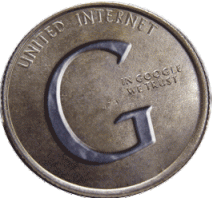 For years, online publishers have known that if you dig through Google’s financial statements, you can calculate that the company’s AdSense system, which serves ads to other sites and splits the revenue from advertisers with them, pays about 70 percent of the money it collects from advertisers to publishers who run the ads.
For years, online publishers have known that if you dig through Google’s financial statements, you can calculate that the company’s AdSense system, which serves ads to other sites and splits the revenue from advertisers with them, pays about 70 percent of the money it collects from advertisers to publishers who run the ads.
Today, Google exec Neal Mohan made a big deal of announcing that Google gives 68 percent of AdSense revenue to publishers. That’s for AdSense display ads, which are targeted to the content of the page on which they appear. Google also sells ads targeted to Web searches. For these, it pays out a lower 51 percent.
To be honest, no one among my trusted sources is really sure why Google made this announcement today. The most common guess is that Google is trying to deflate Apple’s pending iAd network by touting a modestly higher split — 68% versus 60%. Search Engine Land says it’s possibly because Google has been ordered in Italy to disclose these numbers to an Italian newspaper.
Google knows its split seems high. That’s why the penultimate paragraph in Mohan’s announcement explains how another network might give you a higher percentage cut, yet deliver a much smaller overall take. Google, he implies, gets more money per ad than other networks, presumably because of better targeting. Is that true? Or is it Google’s space-octopus-sized reach that draws advertisers?
VentureBeat's mission is to be a digital town square for technical decision-makers to gain knowledge about transformative enterprise technology and transact. Learn More